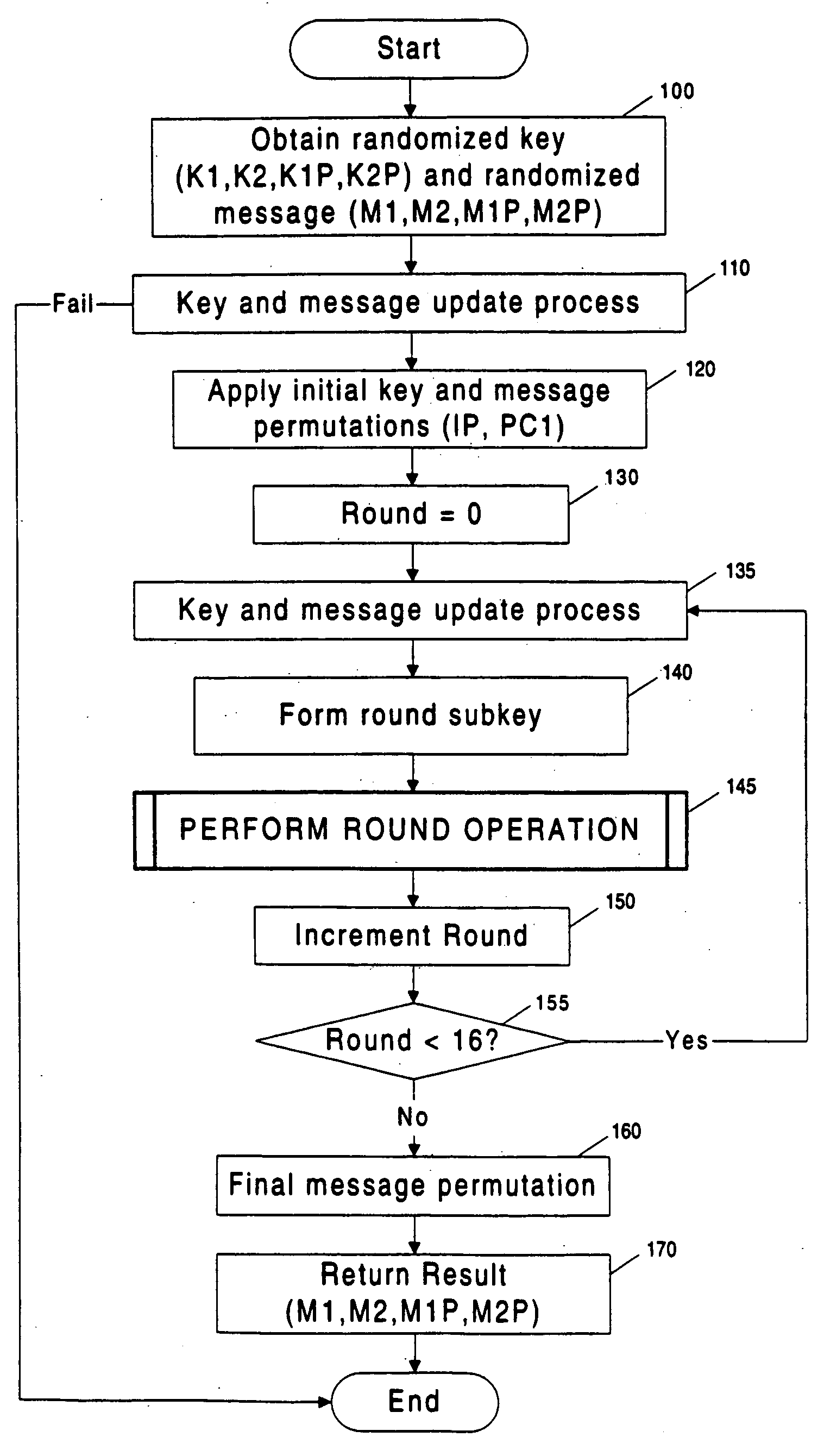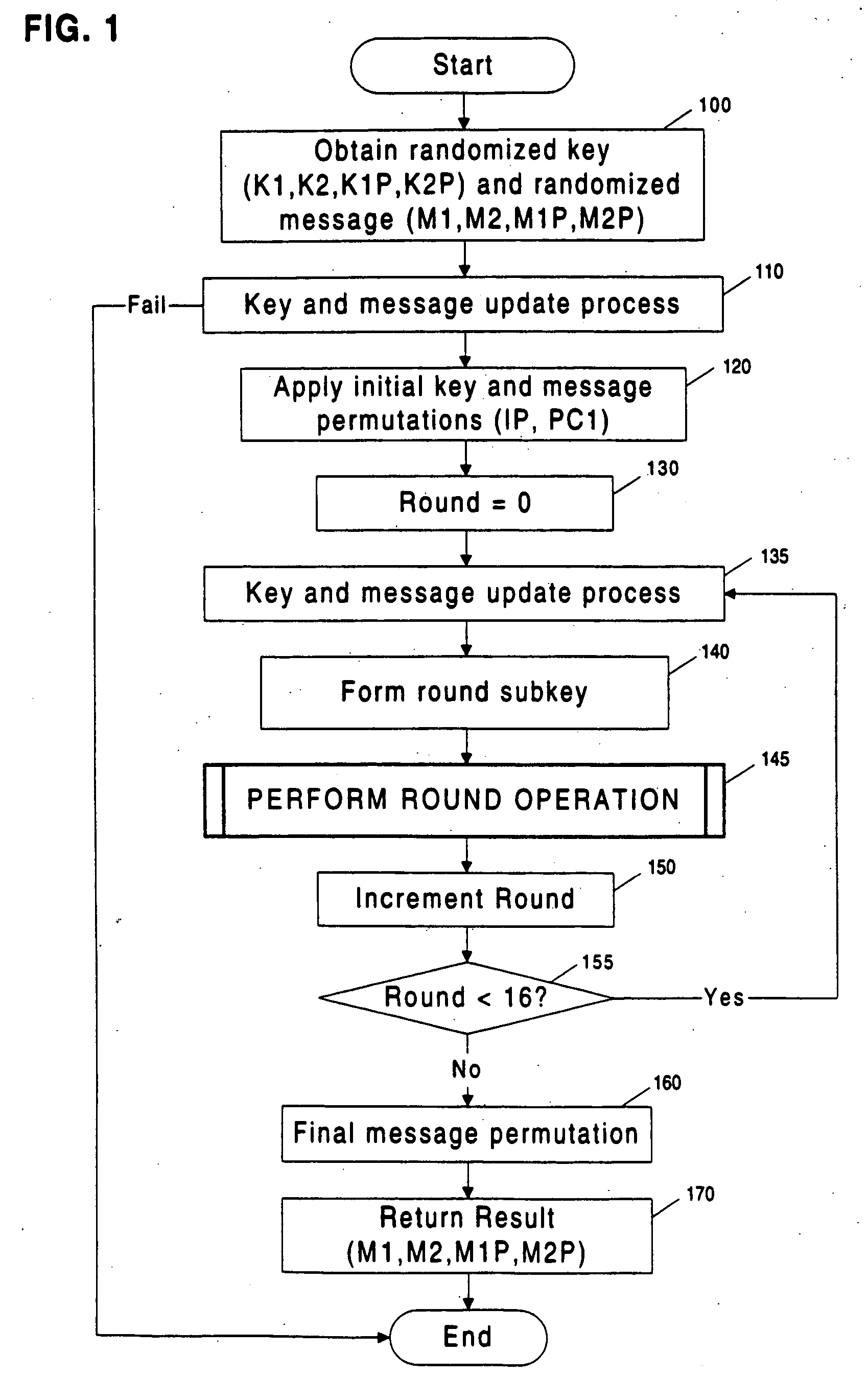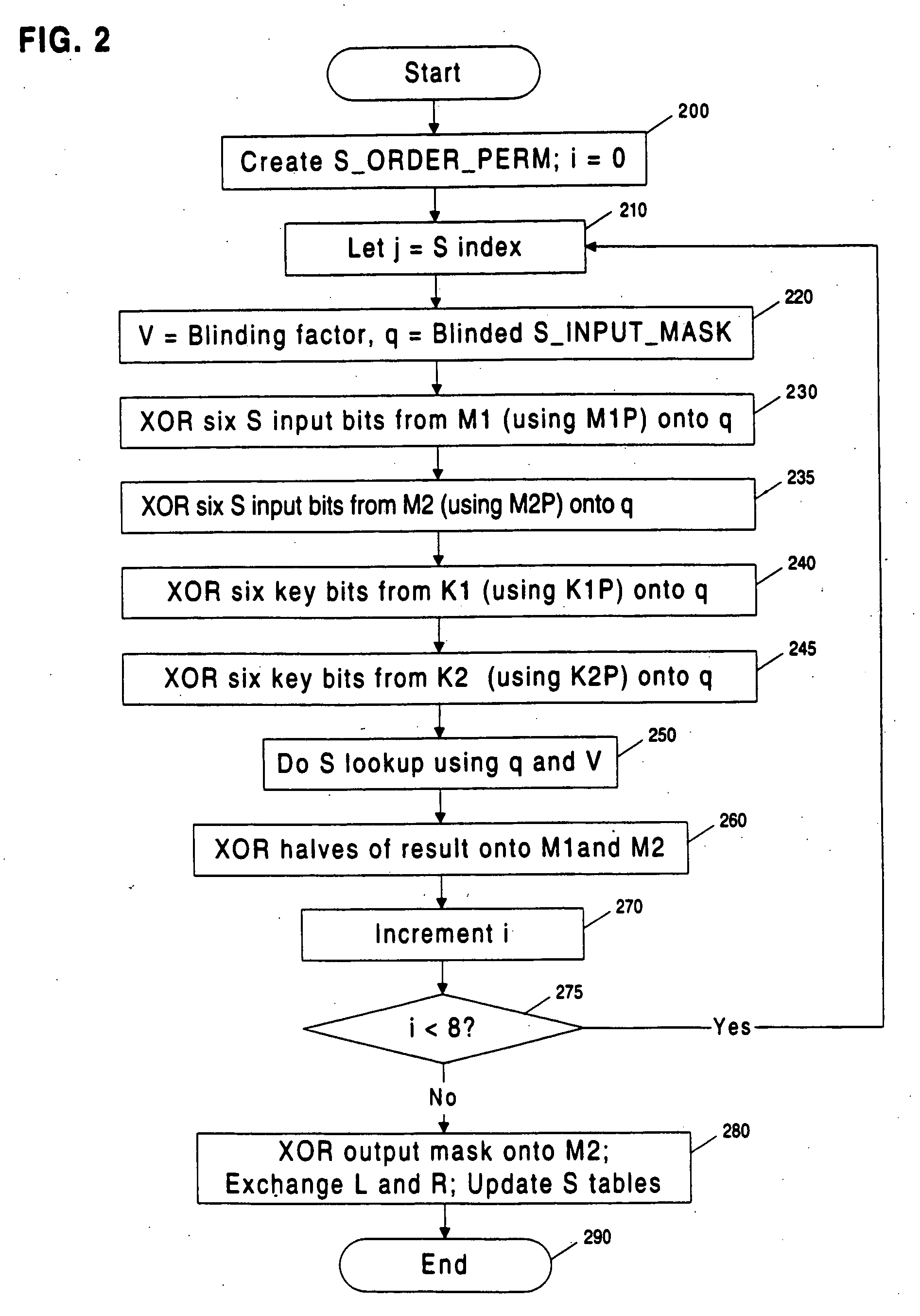Prevention of side channel attacks against block cipher implementations and other cryptographic systems
a cryptographic system and block cipher technology, applied in the field of securing cryptographic systems, can solve the problems of difficult or impossible for attackers to determine secret parameters through analysis of leaked information, and achieve the effect of preventing leakage and being easy to conver
- Summary
- Abstract
- Description
- Claims
- Application Information
AI Technical Summary
Benefits of technology
Problems solved by technology
Method used
Image
Examples
Embodiment Construction
Reduction of Signal-to-Noise Ratios
[0014] To obtain a secret key from a cryptographic system (cryptosystem) that leaks information, an attacker can gather data by observing a series of operations, perform statistical analysis on the observations, and use the results to determine the key.
[0015] In a common situation, an attacker monitors a physical property, such as power consumption, of a secure token as it performs a cryptographic operation. The attacker collects a small amount of data related to the key each time the token is observed performing a cryptographic operation involving the key. The attacker increases the amount of information known about the key by collecting and statistically correlating (or combining) data from multiple observations of the token as it performs operations involving the key (or related key).
[0016] In the case of a cryptosystem which is leaking information, such observations may contain signal (i.e., information correlated usefully to the key). Howe...
PUM
 Login to View More
Login to View More Abstract
Description
Claims
Application Information
 Login to View More
Login to View More - R&D
- Intellectual Property
- Life Sciences
- Materials
- Tech Scout
- Unparalleled Data Quality
- Higher Quality Content
- 60% Fewer Hallucinations
Browse by: Latest US Patents, China's latest patents, Technical Efficacy Thesaurus, Application Domain, Technology Topic, Popular Technical Reports.
© 2025 PatSnap. All rights reserved.Legal|Privacy policy|Modern Slavery Act Transparency Statement|Sitemap|About US| Contact US: help@patsnap.com



